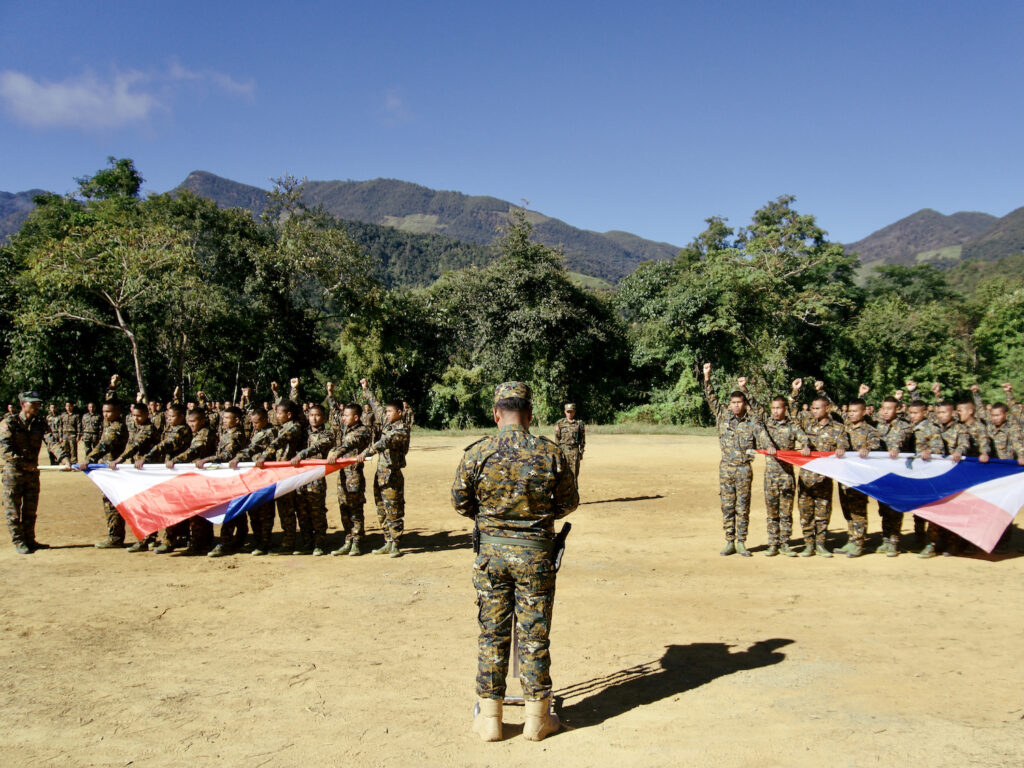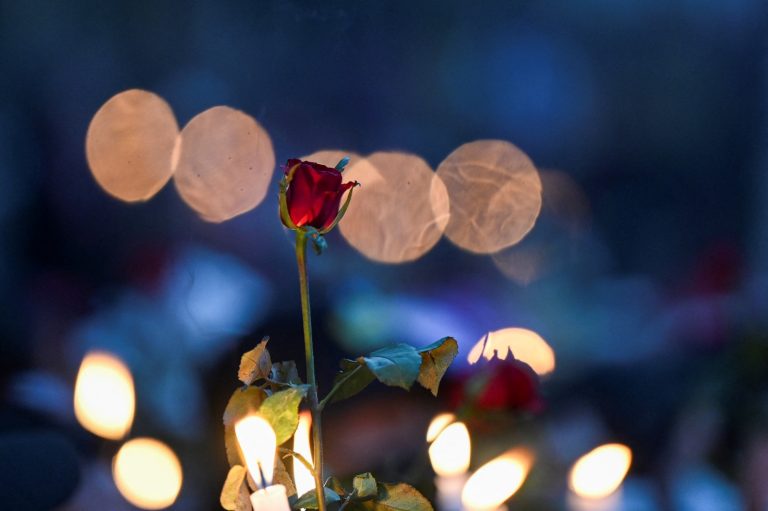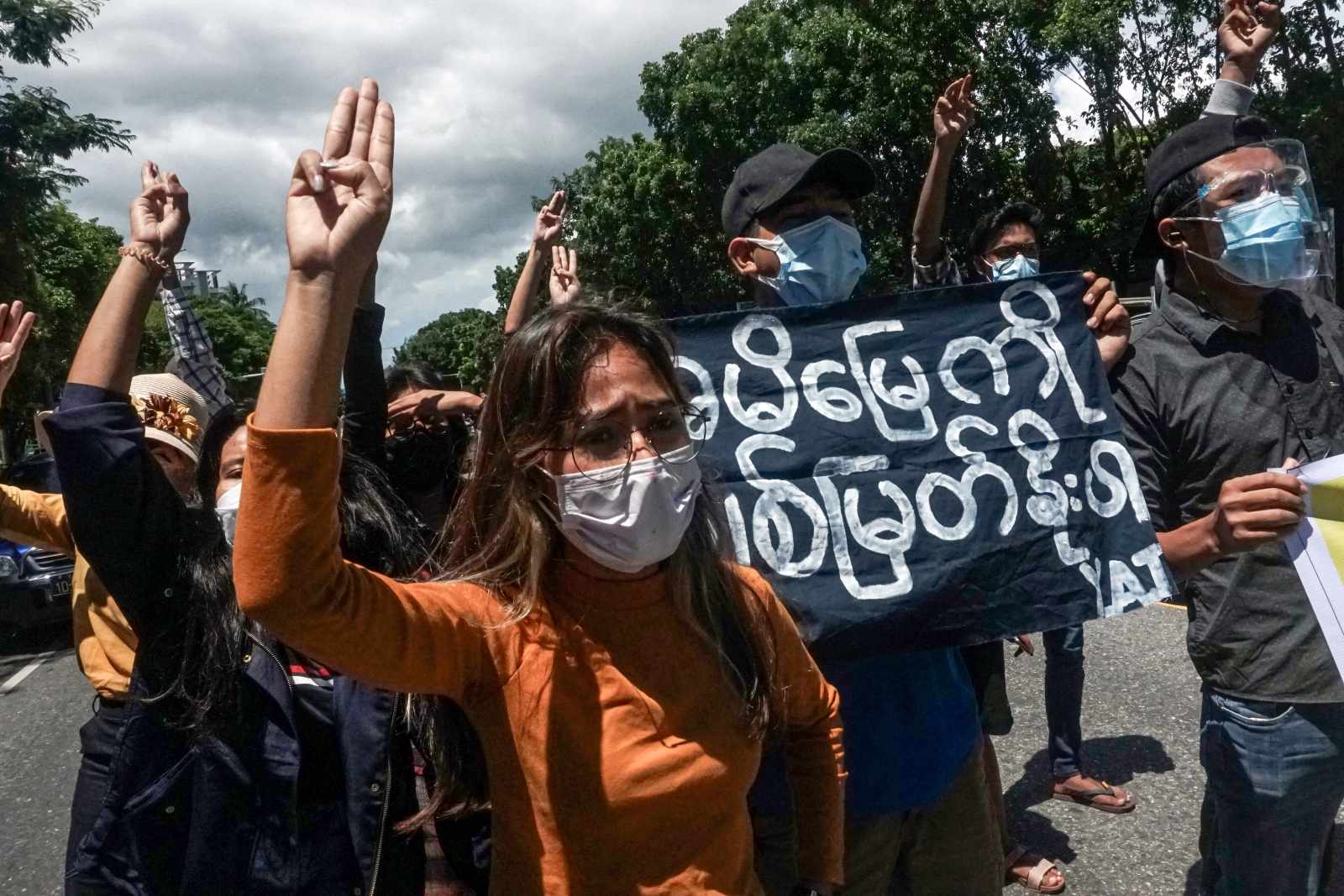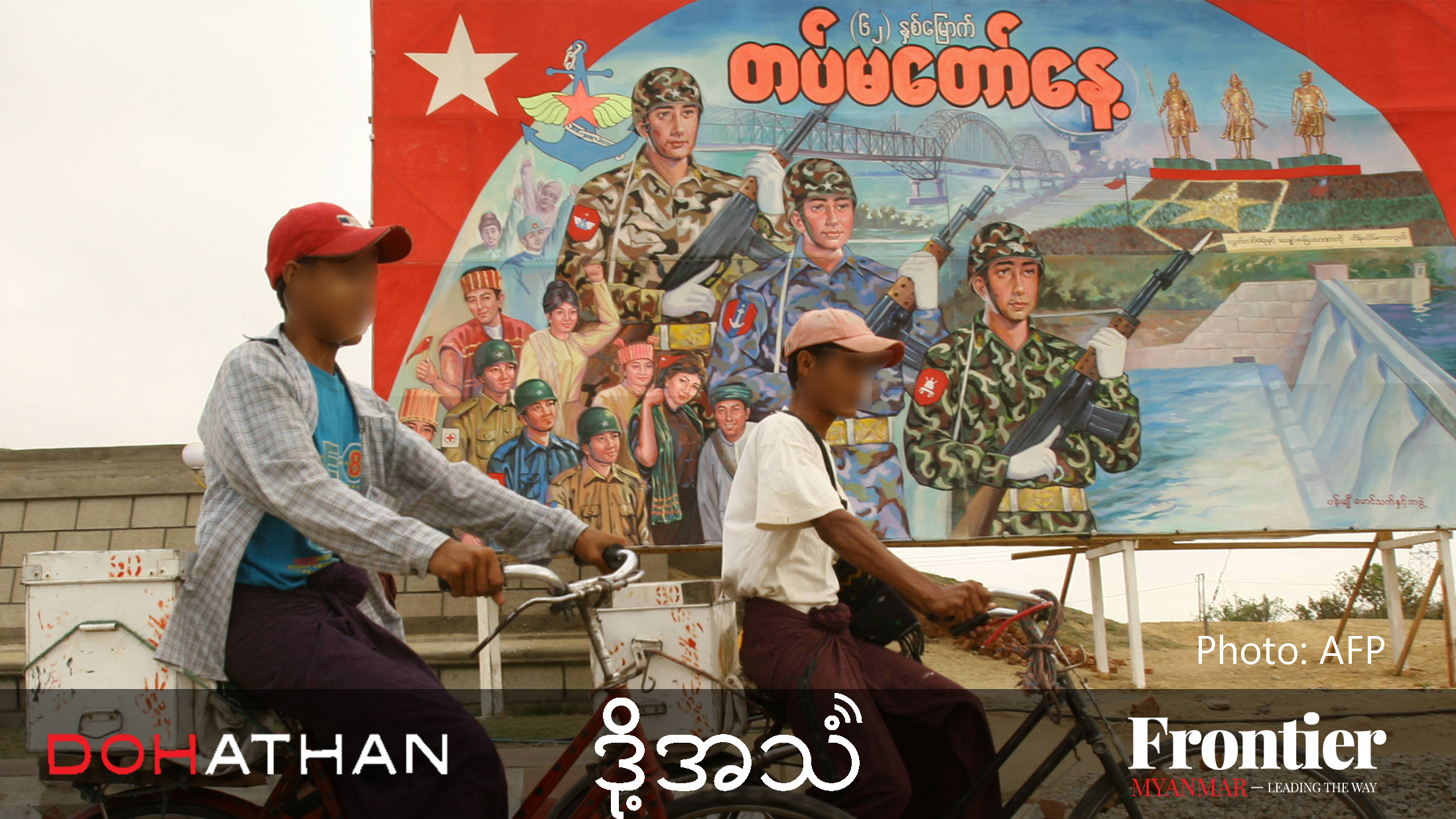A common desire for autonomy among Chin people has helped turn their state into one of Myanmar’s main sites of armed struggle, but resistance leaders say more needs to be done to strengthen unity.
By EMILY FISHBEIN | FRONTIER
Given* had once considered Myanmar national politics as separate from his ethnic identity. In the general election of November 2020, he had volunteered with his father’s campaign for a Chin State parliament seat with the National League for Democracy, believing the party could be “better for the whole country”.
At the time, this perspective was mainstream in the mountainous northwestern state. Although the incumbent NLD government had repeatedly arrested ethnic activists and had failed to advance federal autonomy for ethnic states, most ethnic parties that competed against it suffered crushing defeats in 2020. In Chin, the NLD won 35 of 39 available parliamentary seats, while the Chin National League for Democracy won only one.
The coup in February 2021, however, dramatically transformed the country’s political landscape. Within weeks, calls to restore the elected civilian government had evolved into demands for a complete overhaul of Myanmar’s centralised political system. By April, a body of elected parliamentarians ousted by the coup had abolished the military-drafted 2008 Constitution, announced an interim Federal Democracy Charter and appointed a National Unity Government to lead its implementation.
These changes were soon followed by a major shift in tactics within the pro-democracy movement, as the junta’s deadly crackdowns on nonviolent protests pushed the public to support an armed response. Resistance armies emerged by the hundreds, often joining forces with ethnic armed organisations against a common enemy.
With the exception of Paletwa Township in southern Chin, which saw intense fighting between the military and Arakan Army from 2014, the state had been peaceful over the previous decade. After the coup, however, it quickly became a key resistance front. Township-based Chinland Defense Forces and other Chin armed groups formed in April 2021 joined hands with the Chin National Front, an ethnic armed organisation which has aligned itself with the country’s wider pro-democracy movement. The groups have since been engaged in intense fighting with junta forces and have claimed significant territory outside the main cities and towns.
On the political stage, the Chin have also mobilised, establishing an Interim Chin National Consultative Committee to draft state-level policies and represent Chin political interests at the union level, and at the township level, establishing “public administrations” in areas the junta can no longer access.
These processes have seen Chin people come together with unprecedented solidarity around their ethnic identity, according to more than two dozen interviews conducted in August and September with members of township-based CDFs, the CNF and the Chin National Organization, a group formed in April 2021 and based in Falam Township, whose armed wing is the Chin National Defence Force.
The coup, they say, has not only brought Chin people together against the military, but has also awakened them to a history of oppression under successive Bamar-dominated central governments. Now, they believe, a will to establish an autonomous “Chinland” has become a driving force of the Chin resistance.
“As an ethnic nationality, we should be able to create and choose what we want for our nation,” said Given, who was a lawyer before the coup and now heads the justice department of the CDF public administration in Thantlang Township. “We need to enter the battle now for a Chin nation…for our Chin ethnicity to administer our own people.”
Despite this common goal, however, Chin’s internal diversity, combined with its rugged geography and complex history, have posed challenges to unifying Chin people. Alongside historic levels of cooperation, there have also been growing pains in integrating allied Chin forces, as well as tense disputes and incidents of violence involving some armed groups that are not part of the main Chin alliance. Yet, members of the resistance told Frontier they were optimistic that divisions could be overcome amid a “blossoming” of Chin nationalism.

From ceasefire to revolution
For centuries, the diverse collection of people inhabiting the remote mountains spanning what is today Myanmar’s northwestern border with India and Bangladesh ruled themselves as independent chiefdoms. When the British took control over these areas in the late 19th century, it divided them among its territories of Assam, Bengal and Burma. The Chin Hills Regulations of 1896 established indirect colonial rule over the areas included in Burma, thereby introducing a distinct Chin identity, while still preserving traditional political structures at the local level.
The act enabled local chiefdoms in the Chin hills to continue living autonomously from the Burmese as well as from each other for the next half-century. This autonomy was seemingly guaranteed at a meeting in Panglong, Shan State in February 1947. During the meeting, General Aung San, the father of Daw Aung San Suu Kyi and leader of Burma’s independence movement, invited Chin, Kachin and Shan leaders to join the Union of Burma, offering them “full autonomy in internal administration” in principle, as well as the “rights and privileges which are regarded as fundamental in democratic countries.”
However, Aung San was assassinated five months later, and although Burma gained independence in January of 1948, the Panglong Agreement was never realised. “Even though we got independence from a foreign country, we haven’t achieved independence from the Burmese,” said Salai Ngun San Aung, Assistant General Secretary of the CDF branch in Hakha Township.
A sense of broken promises from Panglong, and more broadly of marginalisation under a centralised political system dominated by the ethnic Bamar majority, has been a driving force behind decades of intermittent conflict along the country’s borders, where more than a dozen ethnic armed organisations are based.
The Chin National Front emerged in 1988 in Mizoram, India and engaged in low-level conflict with the military before signing a bilateral ceasefire in 2012. Three years later, it was one of eight ethnic armed organisations to join a Nationwide Ceasefire Agreement, which despite its name was not signed by many of Myanmar’s largest groups.
Dr Lian Hmung Sakhong, the CNF vice chair, told Frontier in December that during the ceasefire years, the group not only participated in political dialogue with the central government but was also “sowing the seeds for the current revolution”. Within months of signing the 2012 ceasefire, he said the group began conducting public consultations across Chin as well as “nation-building” activities including raising awareness about Chin history, culture and ethnic identity, which continued right up until the 2021 coup.
Although the ceasefire was never formally annulled, the CNF openly condemned the coup and declared its support for the pro-democracy movement on February 20, 2021, when it signed a joint statement with several other NCA signatories. The following month, Lian Hmung Sakhong was one of nine people who led the drafting of the Federal Democracy Charter, and in April 2021, the CNF came together with members of Chin civil society and Chin politicians to form the ICNCC. The same month, Lian Hmung Sakhong joined the NUG as Minister of Federal Union Affairs.
Even before that, Chin youth were visiting the CNF headquarters of Camp Victoria in rural Thantlang Township to prepare to take up arms against the new junta, according to interviews with CDF leaders. “We learned how to hold guns and how to build a camp,” said Cung Hlei Thawng, who co-founded the CDF-Thantlang in April 2021 and is now its commander-in-chief.
At the end of April 2021, Chin State saw some of the first clashes between resistance forces formed after the coup and the military. The CDF-Mindat, mainly armed with homemade hunting rifles, ambushed junta forces, which retaliated with artillery fire and rocket-propelled grenades.
A month later, the CNF was the country’s first ethnic armed organisation to formally sign an agreement with the NUG. “[The military] made the coup, and whatever they claim is nonsense. So, we also decided that we can no longer talk,” said the CNF Vice Chairman-3 Dr Sui Khar. “We decided to eliminate once and forever this military dictatorship and regime.”
The CNF, whose armed wing is the Chin National Army, has since been openly training, arming and fighting alongside the CDFs and other Chin resistance groups, and in August 2021, it joined an alliance with 12 of them. Initially called the Joint Military Council, it was relaunched a month later as the Chinland Joint Defense Committee and now has 18 members.
Sui Khar said that the CDFs were established with the CNF’s “blessing”, on the condition that they would disarm after defeating the military. He also suggested the current arrangement was a compromise.
“For many young people, it is hard to become like the Chin National Army, which is strictly disciplined, but at the same time, they would also like to join in the fight against this military regime,” he said. “The best way is if they can enrol in the Chin National Front or the Chin National Army, but sometimes, the best way is not realistic.”

‘We have been cheated and deceived’
“Before, nationalism was very weak, but after the coup, that nationalism sprouted and now it is very strong,” said Sui Khar.
This transformation was also highlighted by Salai Timmy Htut, a CNO official and general secretary of the CJDC alliance. “It has been many, many years that we have been oppressed by other people. Now in 2022 [our feelings] burst…The spirit of nationalism started to blossom,” he said.
Alongside this blossoming nationalism, historical grievances toward the Bamar majority have intensified. “Our God-given state, our world, our land, our culture, our identity were swallowed,” said Ngun San Aung, of the CDF-Hakha. “I see this revolution as saving our Chin State, our Chin ethnic people.”
Before the coup, such perspectives mainly came from ethnic activists and risked public backlash for being seen as unpatriotic or disruptive to national unity. Now, they serve as a rallying point even among some former NLD supporters.
“As an ethnic Chin, I don’t want to live under the Bamars’ lead, quite frankly. But if there is a free and open federal democratic union, then I want to live in it,” said Joseph Thang Sun Mung, a former NLD party secretary in Falam Township and now a spokesperson for the CDF-Tonzang.
Salai Htun Htun Oo, the CJDC’s spokesperson, was also cautious about trusting the Bamar. “We have experienced and read in history that we have been cheated or deceived by the majority group, so we are a little bit doubtful about Burmese people,” he said. “We don’t especially want to exclude Burmese people, but we want to stand firm.”
Beyond a desire for autonomy, however, many members of the Chin resistance appear to be waiting on future political negotiations before pinning down more specific objectives, which they said might include federal or confederate status or even independence.
“We have to defeat Min Aung Hlaing and his group from the roots so that we can get our peace of mind and safety… That is my first goal,” said Thang Thang*, who leads the CDF-Thantlang’s public administration in a 10-village area known as Bual.
Ngun San Aung of the CDF-Hakha said he was too focused on the safety and well-being of his comrades on the front lines to pay attention to detailed political matters. “The first thing is to beat the SAC,” he said, using an abbreviation for the junta’s formal name, the State Administration Council. “After that…[we] will negotiate the administrative structure.”
‘We didn’t have a chance to mingle’
As in other parts of the country, the Chin resistance has struggled to build a truly unified front. This challenge long predates the coup – a Human Rights Watch report in 2009 describes fractures within the CNF leadership shortly after its establishment, limiting support for the group in some parts of the state.
Since the coup, tensions have at times flared between CJDC members and a handful of outlying armed groups, resulting in occasional violent incidents. Even within the CJDC alliance, resistance leaders say differences are still being worked out.
“There are many gaps between CNF and CDFs, because CNF is very, very advanced militarily and politically, but the good thing is the CNF is trying to unite all the CDFs into one group,” said Salai Timmy Htut, the CJDC general secretary.
Members of the Chin resistance also emphasised the need to overcome differences between townships and tribes, with some perceived as having stronger political representation than others. “We should focus less on prioritising certain groups. Instead, we should prioritise the spirit of Chin and work together,” said Salai Aung Lin, deputy brigade commander with the CDF-Kanpetlet.
Local conditions have presented significant obstacles. The state’s severe, mountainous terrain means communities have been isolated from each other for most of their history. Consequently, Chin people speak more than 40 languages, many of which are not mutually intelligible. Although Burmese is sometimes used as a common language, many in rural areas do not speak it fluently. Chin is also one of Myanmar’s least-developed states, with many villages lacking reliable mobile phone connectivity or paved roads. “We didn’t have a chance to mingle with each other, so we have to do a lot to unite people,” said Timmy Htut, the CJDC general secretary.
Another challenge, say members of the Chin resistance, is that even the concept of Chin nation-building is relatively new. “Mostly our tribal mindsets prevail over our national mindset, because we Chin people ourselves didn’t have an opportunity for political or social discussions,” said Htun Htun Oo, the CJDC spokesperson. “We just did what other people said, whether British or Burmese.”
Sui Khar of the CNF added that the military’s efforts over several decades to promote a dominant Bamar identity had hindered the development of Chin nationalism. “The way the Burmese army is building the nation is to assimilate other ethnic nationalities and introduce Burmanisation,” he said, adding that this had contributed to Chin people being “disarrayed”.
Yet, despite lingering divisions, the resistance movement has forged unprecedented common ground among Chin people, according to Paul*, president of the CDF-Paletwa. “We all have this dream of building a future Chin nation,” he said. “We have never been this united before.”

Chin frontiers
As well as negotiating internal dynamics, defining the geographic boundaries of Chinland has also been fraught, with many in the Chin resistance looking to incorporate areas in neighbouring regions with large Chin populations. “There are many Chin people living in some places which are not in Chinland territory,” said Timmy Htut of the CJDC. “Before the British came, our ancestors lived there for many years, so we want to unite people from those places to build a nation together.”
Especially contentious are the neighbouring areas of Kalay Township in Sagaing Region and Gangaw Township in Magway Region. Kalay, in particular, holds historical and cultural significance for Chin people, and with a total population of nearly 350,000 according to the 2014 census, the township is also roughly three-fourths as populous as all of Chin State.
The CDF-Kalay-Kabaw-Gangaw is one of several resistance forces based there, but it is the only one that also seeks to incorporate these areas into Chinland. Kabaw refers to the Kabaw valley, located in Kalay Township near the border with the Indian state of Manipur.
The CDF-KKG’s vice president Ram Siam said he hopes to see the boundaries of Chinland “brought back to the way they were historically” and that before focusing on recognition at the union level, his group is striving to build support for this cause among local Chin people.
Even within the CDF-KKG, however, not everyone appears to share this goal. “The reason that I joined this group is simple: I want to fight against the military dictators,” said a Bamar member of the group who spoke on condition of anonymity. “For me, it’s not a big deal whether Kalay is in Chin State or Sagaing Region. The most important thing is that each and every person has their rights.”
Another area with contentious ethnic politics is Paletwa, a Chin State township where the Arakan Army maintains a strong presence. It is the most populous township in Chin, with more than 97,000 people, who are mostly Chin but also include a sizable Rakhine minority. In the years before the coup, Paletwa was isolated from the rest of Chin by heavy fighting between the AA and military, which led to tensions between the CNF and AA as well as between Chin and Rakhine communities. “Before 2021, Chin people in Paletwa Township felt like we were living under war from a revolution fought by Rakhine people,” said Paul of the CDF-Paletwa.
In November 2020, the AA and military agreed to an informal ceasefire that continued after the coup. But even when the guns fell silent, the Chin of Paletwa felt caught between the two groups, said Paul. The AA banned participation in the Civil Disobedience Movement, a mass strike by government staff, as well as nonviolent protests against the coup in areas under its control or influence. “We in Paletwa who wanted to participate in the revolution felt like we couldn’t do anything freely at all,” he said.
The CDF-Paletwa was established in April 2021 and has since navigated a tight space due to the large number of military and AA forces in the township. Still, Paul said it had fought around 20 battles against the military, including two alongside CNA forces.
Fighting between the AA and military resumed in July last year, only to halt again in another informal truce in November. However, the CDF-Paletwa has never fought alongside the AA. “Our common enemy is the terrorist military council. To fight that common enemy, we are connected to all the groups and organisations who have the same vision, but not to the extent of cooperation,” said Paul.
Negotiations between the two groups, he added, should wait until after the resistance war is won. “Later on, after we have defeated the military, there will be a table or point where we [resistance groups] converge,” he said. “We want to approach [our differences] by sitting down together and discussing openly about what should happen.”
The AA-military conflict, combined with prolonged internet shutdowns both before and after the coup, have not only put Chin people in physical danger, said Paul, but also at risk of political manipulation. “It’s so easy for the military to persuade people. They apply practical methods – for example, if you need rice, they will give you one can of rice,” he said. “Not everyone knows about our [Chin] revolution’s essence because the military made it that way, by doing things like cutting off the news and information flow and using psychological warfare.”
Still, he hoped that Chin people in Paletwa could participate in the Chin nation-building process. “All Chin ethnic people need to come together as one, and build our dream of a future Chin nation,” he said. “We must have our own Chinland constitution, give our nation its own name, fly our own flag, and speak our own languages as we want.”
*Denotes the use of a pseudonym or nom de guerre where sources had security concerns







